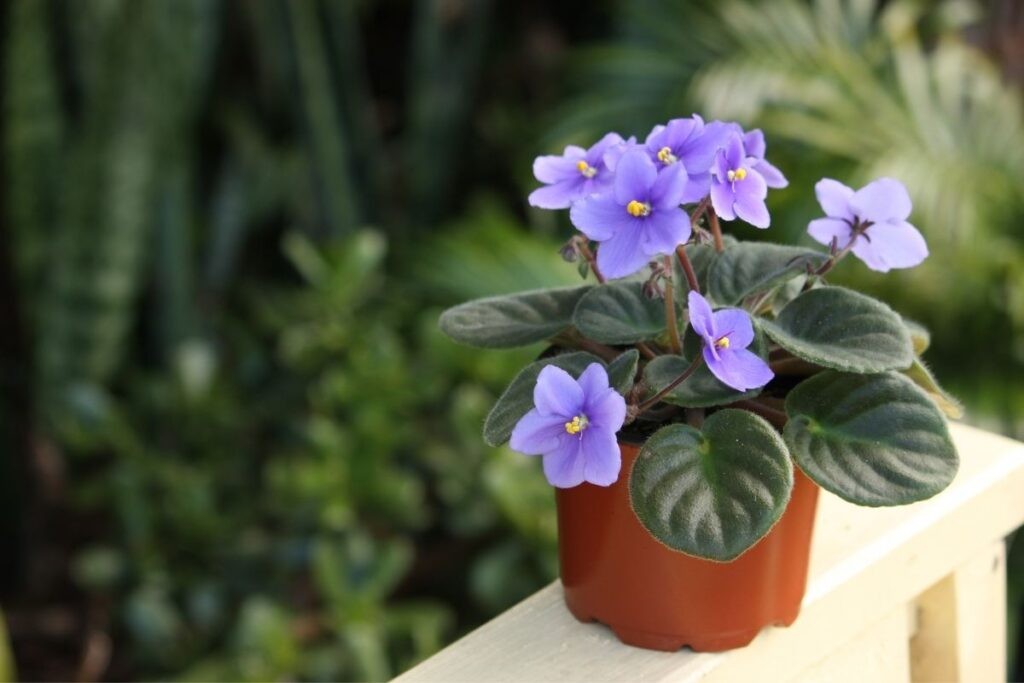How to care for African violets? The plant needs indirect light, moist soil, and indirect watering. You may have some questions, but this article will answer most of them. Here’s some basic information:
Watering from the top or bottom
When it comes to watering your African violets, you can choose to water from the top or the bottom. Watering from the bottom means you need to use a saucer. Watering from the top is easier and requires little preparation. To water from the bottom, you will need a saucer and a little bit of soil. It may take an hour or two to reach the top of the pot. If you’re using a saucer, you should add a little bit of water each time.
African violets don’t like to have wet leaves. If the leaves stay wet, it can cause blight, spotting on parts of the leaves, or powdery mildew. When watering from the top, the soil should remain moist but not soggy, which can cause fertilizer salt to build up. For larger plants, you may want to consider using a saucer or a tray.
Plant needs indirect light
To keep your African violet healthy and happy, make sure it receives indirect light, such as from windows. Make sure to keep its soil moist, but not so wet that it becomes soggy. Watering the violet from above may cause spotting, so water from the bottom first. African violets also require fertilizer, which can be purchased on Amazon. Feed the plant once a week, but make sure to monitor the amount. If you are feeding your violet fertilizer too often, dilute it to one-fourth strength.
Direct sunlight can burn the leaves of an African violet, so they need to be placed in indirect light, preferably from an east or west window. It is best to rotate the plant every week to get even light exposure. This will also help ensure even growth and symmetrical rosette form. Ensure that the soil is well-drained and free of moss and other weeds. For best results, use a growing mix that is formulated for plants in indirect light.
Avoids blights
There are several common blights that can affect African violets. One of the most common is Botrytis cinerea, a fungus that can infect plants and spread quickly. The first symptoms of this disease include stunted growth in the center crown and spreading to the leaves. Once advanced, the plant will be wilted, and the flowers will be dark and withered. Fortunately, there are treatments and preventative measures you can take to protect your African Violets.
To avoid Botrytis, you should remove dead stems and old bottom leaves from your plants. Botrytis can also be caused by insects such as Mealybugs, which feed on the plant’s leaves and stems. African violets should be placed in indirect, bright light with good air circulation. Also, be sure to follow the bottom-watering routine, as wetting the leaves can lead to Botrytis and other diseases.
Requires moist soil
The first thing you need to do when you purchase an African violet is to find a pot that is large enough to contain the entire plant. If you cannot find a suitable pot, you may have to remove the bottom part of the plant’s roots. You can repotted the African violet once or twice a year. Remember to repotted the plant with fresh soil each time. The African violet’s root system requires moist soil to thrive, so repotting it is necessary.
To care for your African violet, you must use a well-draining, pH-balanced soil. You can purchase a mixture that is specifically made for this purpose in some nurseries. The mixture should contain 50 percent matter, 25 percent air and 25 percent water. You also need to make sure the soil is porous and slightly acidic. Once you’ve found the perfect mixture, you can begin planting your African violet.
Is non-toxic to pets and humans
If you’re worried that your cat might get poisoned by your houseplant, don’t be. Cats are highly persistent and can easily get into almost any plant. Although African violets are safe for cats to consume, you still have to keep them away from them if you want to avoid a nasty reaction. Cats love to gnaw on houseplant foliage. It’s important to keep them out of the sunroom or darkened bedroom, where they won’t have access to the African violet.
While African violets are non-toxic to humans and pets, they are toxic to hamsters. They can cause indigestion in small animals. Keep them out of reach of your animals and train them to stay away from them. You should also keep in mind that you’re responsible for what your pets eat, so make sure you supervise them carefully. Unlike people, pets don’t know what’s healthy for them, and they may accidentally eat your plant.
Is problematic for allergy sufferers
The African violet deserves its place on the list of problematic plants for allergy sufferers. Its leaves are fuzzy, making it a prime target for mold and dust mites. But that does not mean you can’t enjoy the indoor benefits of these plants. You can always ask an expert at a garden center about what plants will be most beneficial for you, and how to choose them. Here are some suggestions to make your indoor plants healthier for you.
While African violets are beautiful plants, they aren’t the best choice for allergy sufferers. The plant contains high levels of pollen and can aggravate allergies. While it’s a nice addition to any garden, people with allergies should avoid these plants. Allergies to these flowers can lead to rashes, headaches, and even skin problems. In these cases, it is best to plant other plants, like camellias, if you’re a tolerant plant-lover.
